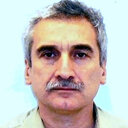About
11
Publications
1,236
Reads
How we measure 'reads'
A 'read' is counted each time someone views a publication summary (such as the title, abstract, and list of authors), clicks on a figure, or views or downloads the full-text. Learn more
565
Citations
Publications
Publications (11)
We have studied glutathionylcobalamin (GS-Cbl) by optical spectroscopy and with density functional theory (DFT) and time-dependent DFT (TD-DFT) electronic structure methods of truncated geometric models. We examined the geometric structure of the models by comparison of DFT calculations with recent high-resolution experimental X-ray structure data...
Vibrational frequency calculations were made for a Ag(10)-pyridine vertex complex with density functional theory (DFT) for static simulated spectra and with time-dependent DFT (TD-DFT) for preresonance and resonance simulated spectra using both B3LYP/LANL2DZ and BP86/TZP methodologies. In addition, 40 excited states of the complex were calculated a...
Water molecules in clefts and small clusters are in a significantly different environment than in bulk water. We have carried out ab initio calculations that demonstrate this in a series of clusters, showing that cooperative effects must be taken into account in the treatment of hydrogen bonds and water clusters in such bounded systems. Hydrogen bo...
Molecular dynamics simulations were used to study charge reduction in electrosprayed liquids through the formation of slender nanojet intermediates. The dynamics of shape relaxation and disintegration were followed as a function of charge in cylindrical water nanojets containing protonated diglycine molecules. Depending on the overall charge, simul...
A series of ab initio (density functional) calculations were carried out on side chains of a set of amino acids, plus water, from the (intracellular) gating region of the KcsA K(+) channel. Their atomic coordinates, except hydrogen, are known from X-ray structures [D.A. Doyle, J.M. Cabral, R.A. Pfuetzner, A. Kuo, J.M. Gulbis, S.L. Cohen, B.T. Chait...
Little is known about the microscopic mechanism of solvation dynamics in room-temperature ionic liquids, but experimental studies have found that the solvent response has both sub-picosecond and nanosecond timescale components. We present the results of molecular dynamics calculations of the time-resolved fluorescence response of a chromophore in a...
Hydrogen bonding has been studied in a model system, originally devised for the KcsA K+ ion channel, using density functional calculations. The model was to represent the putative gating region of the channel. Four acetic acids here are fixed at approximately 4-fold symmetry; six water molecules are added. Initial configurations had two water molec...
In this work, we use molecular dynamics simulation to explore the physical principles governing the polarity of room-temperature ionic liquids. We use the calculated absorption spectrum of the solvatochromic dye molecule betaine-30 as a proxy for polarity and characterize the solute-solvent interactions responsible for the solvatochromic shift. We...
The behavior of electrified droplets in an atmospheric environment and the mechanism of ion formation in electrospray ionization are the subject of continuing debate. Experimental evidence to decide between the various models of ion formation (e.g., ion evaporation, Coulomb explosion, and charge residue model) is not readily available and is especi...
There currently exist a number of theoretical works on the study of contact melting, and the ionic liquids formed by this
method. It is possible to select several directions from these studies. One of them is a study of the kinetics of growth of
the fluid area in binary systems. Considering a pair of regular displacement boundaries, 1 and 2, a flui...
Questions
Question (1)
Could you please provide your described molecular structures by Protein Data Bank (PDB) format or by another standard representation for macromolecular structure data?




















